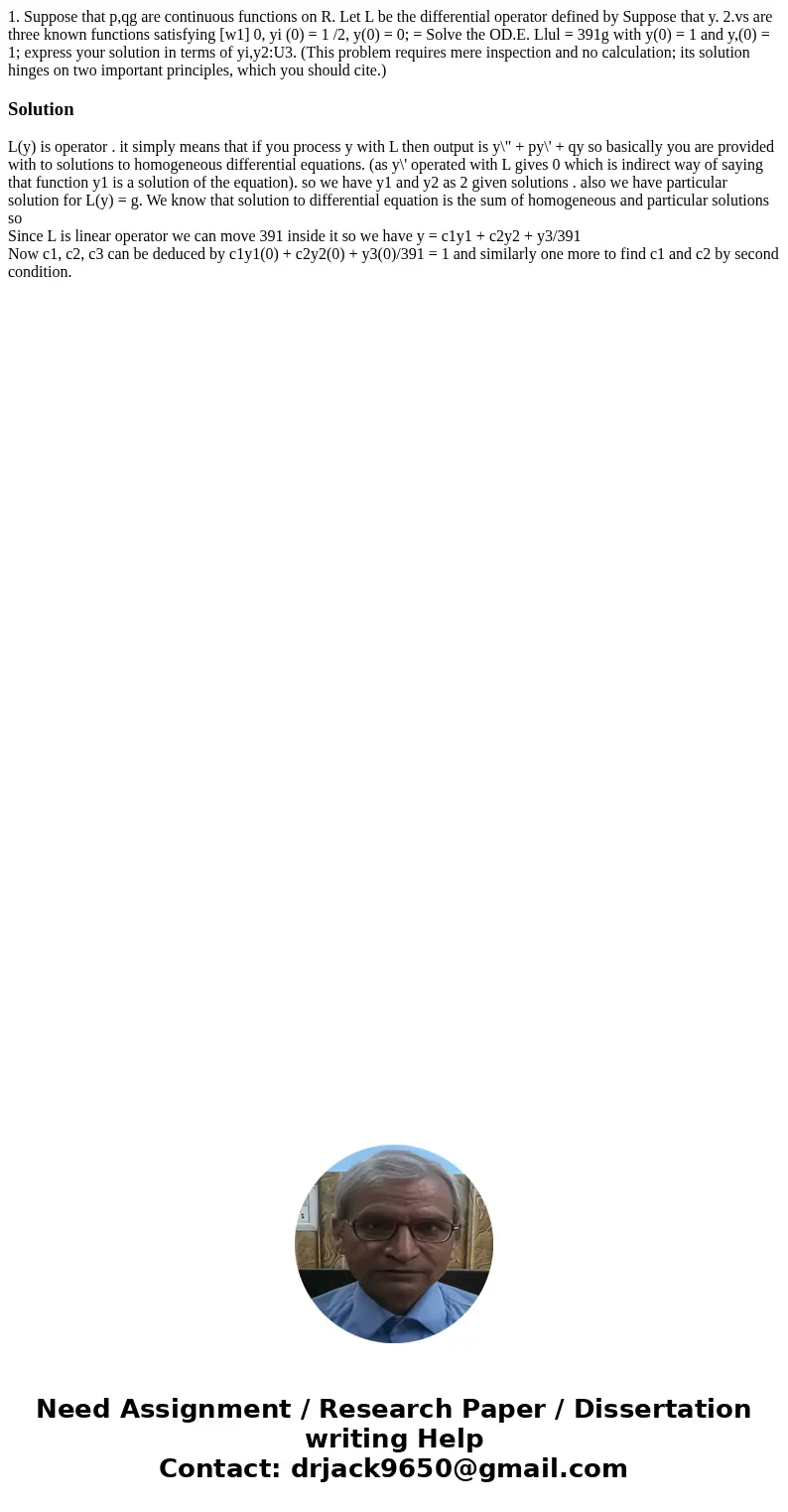1 Suppose that pqg are continuous functions on R Let L be th
1. Suppose that p,qg are continuous functions on R. Let L be the differential operator defined by Suppose that y. 2.vs are three known functions satisfying [w1] 0, yi (0) = 1 /2, y(0) = 0; = Solve the OD.E. Llul = 391g with y(0) = 1 and y,(0) = 1; express your solution in terms of yi,y2:U3. (This problem requires mere inspection and no calculation; its solution hinges on two important principles, which you should cite.) 
Solution
L(y) is operator . it simply means that if you process y with L then output is y\" + py\' + qy so basically you are provided with to solutions to homogeneous differential equations. (as y\' operated with L gives 0 which is indirect way of saying that function y1 is a solution of the equation). so we have y1 and y2 as 2 given solutions . also we have particular solution for L(y) = g. We know that solution to differential equation is the sum of homogeneous and particular solutions so
Since L is linear operator we can move 391 inside it so we have y = c1y1 + c2y2 + y3/391
Now c1, c2, c3 can be deduced by c1y1(0) + c2y2(0) + y3(0)/391 = 1 and similarly one more to find c1 and c2 by second condition.

 Homework Sourse
Homework Sourse